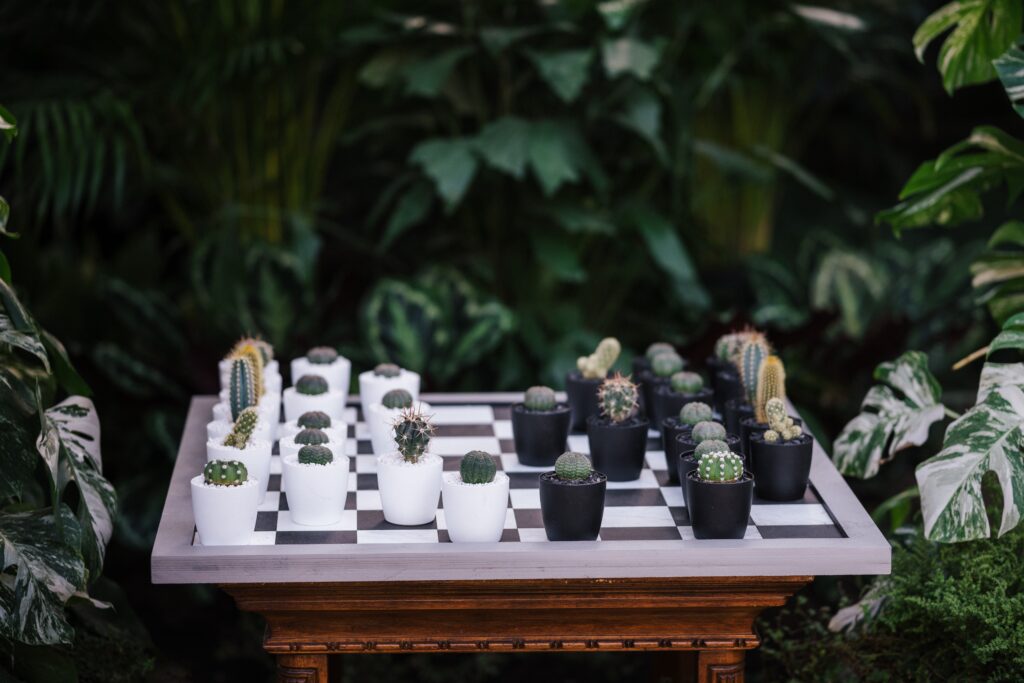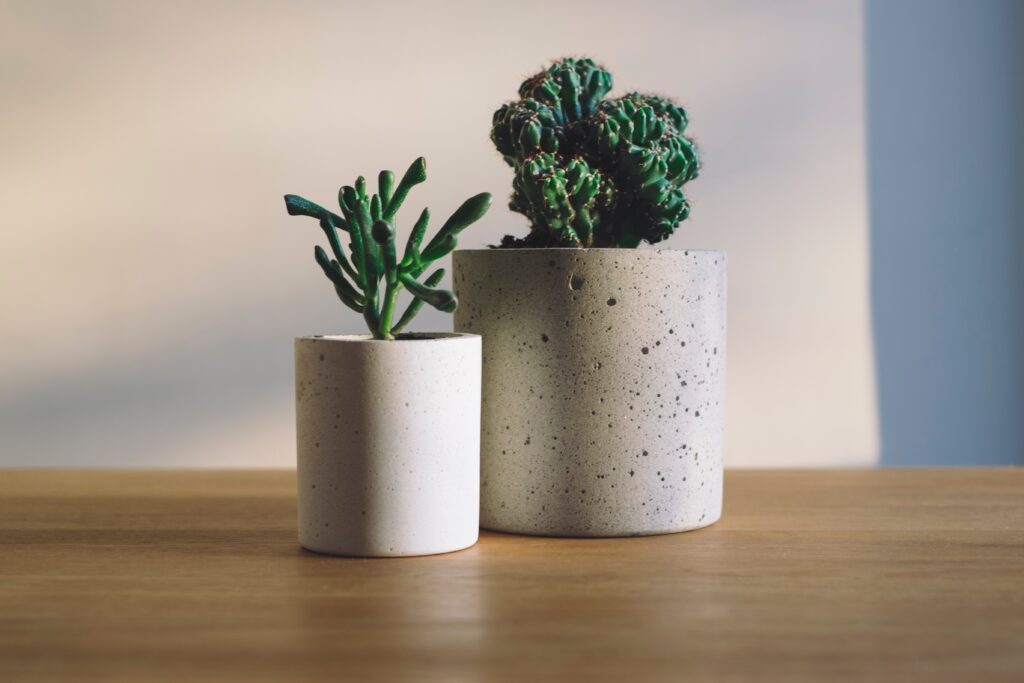Minimalist decor aims to create an uncluttered, serene, and visually appealing space. While simplicity is the key, incorporating plants into minimalist decor can add life, beauty, and a touch of nature to the surroundings. In this article, we will explore the benefits of including plants in minimalist decor, how to choose the right plants, placement and arrangement techniques, integration with minimalist furniture, maintenance tips, and more.
Benefits of Incorporating Plants in Minimalist Decor
Enhances Indoor Air Quality
One of the significant benefits of incorporating plants in minimalist decor is the improvement of indoor air quality. Plants act as natural air purifiers, absorbing carbon dioxide and releasing fresh oxygen. They also filter out harmful toxins present in the air, creating a healthier and cleaner environment to breathe.
Adds a Natural Element
Plants bring a sense of nature indoors, creating a harmonious connection between the inside and outside world. The lush greenery and organic shapes of plants provide a refreshing contrast against the clean lines and neutral colors often found in minimalist decor. This infusion of nature adds depth and character to the space, making it more inviting and visually appealing.
Creates a Calming Atmosphere
Incorporating plants in minimalist decor can contribute to a calm and serene atmosphere. Research has shown that being surrounded by plants can reduce stress levels, improve mood, and promote relaxation. The presence of greenery provides a sense of tranquility and can help create a peaceful retreat within the home.

Choosing the Right Plants for Minimalist Decor
When selecting plants for minimalist decor, it is important to choose ones that align with the principles of simplicity and minimalism. Here are some factors to consider:
Low-Maintenance Plants
Minimal care and attention are best for plants. Low-maintenance plants, such as succulents or snake plants, are ideal for minimalist decor as they thrive in various indoor conditions and don’t require frequent watering or extensive maintenance.
Compact and Structured Plants
Choose plants with compact growth habits and structured forms. Plants with neat, symmetrical shapes, like a fiddle-leaf fig or a peace lily, can complement the clean lines and simplicity of minimalist decor. Their structured appearance adds a touch of elegance and order to the space.
Plants with Minimalistic Containers
Consider using plants with minimalistic containers or planters. Opt for simple, sleek pots made from materials like ceramic or concrete. The clean and minimalist design of the containers should harmonize with the overall aesthetic of the space.
Placement and Arrangement of Plants
Proper placement and arrangement of plants play a crucial role in achieving a balanced and visually pleasing minimalist decor. Here are some techniques to consider:

Creating Focal Points
Use plants as focal points to draw attention and create visual interest. Place a larger plant, such as a monstera or a palm, in a strategic location to become the center of attention. Surround it with minimalistic elements to highlight its presence and create a captivating focal point.
Utilizing Vertical Space
Maximize the use of vertical space by incorporating hanging or climbing plants. Suspended planters or wall-mounted plant holders can add depth and dimension to the decor. This technique is especially useful in smaller spaces where floor area is limited.
Grouping and Clustering Plants
Grouping plants together in clusters can create a lush and cohesive display. Select plants of varying heights and textures and arrange them in clusters of odd numbers, following the principles of minimalism. This arrangement adds visual interest and a sense of abundance without overwhelming the space.
Integrating Plants with Minimalist Furniture
To achieve a harmonious blend between plants and minimalist furniture, consider the following tips:
Selecting Complementary Colors
Choose plants with foliage colors that complement the color palette of the minimalist decor. For example, pairing vibrant green plants with a predominantly white and neutral decor scheme can create a striking contrast and focal point. The colors should harmonize and enhance each other’s visual impact.

Incorporating Natural Textures
Introduce natural textures through plants to add depth and visual appeal. Opt for plants with textured leaves, such as the prayer plant or the ponytail palm. The juxtaposition of smooth furniture surfaces with the intricate textures of plants creates a tactile experience and adds interest to the decor.
Using Plants as Accent Pieces
Use plants as accent pieces to highlight specific areas or objects in the minimalist decor. Placing a small potted plant on a side table or a shelf can draw attention to the carefully curated items in the space. The plant acts as a subtle accessory that enhances the overall aesthetic.
Maintenance Tips for Plants in Minimalist Decor
To ensure the longevity and health of plants in minimalist decor, follow these maintenance tips:
Proper Watering and Drainage
Water plants according to their specific requirements, ensuring proper hydration without overwatering. Use well-draining pots and containers to prevent waterlogging, which can lead to root rot. It’s essential to strike a balance between providing enough moisture and avoiding excessive watering.
Pruning and Trimming
Regularly trim and prune plants to maintain their shape and prevent overgrowth. Remove any yellowing or dead leaves to keep the plants looking fresh and vibrant. Pruning also promotes new growth and helps maintain the desired size and form of the plants.
Cleaning and Dusting
Keep the leaves of plants clean by gently wiping them with a damp cloth to remove dust and dirt. This not only enhances the visual appeal of the plants but also allows them to absorb light more effectively. Regular cleaning also helps prevent pest infestations and keeps the plants healthy.
Conclusion
Incorporating plants into minimalist decor can bring a sense of life, beauty, and tranquility to the space. By carefully selecting the right plants, considering their placement and arrangement, and integrating them with minimalist furniture, you can create a harmonious balance between simplicity and nature. With proper maintenance and care, these plants will thrive and enhance the overall aesthetic of your minimalist decor.
FAQs
1. How do I choose the right plants for my minimalist decor?
Choosing low-maintenance plants with compact and structured forms is key. Look for plants that align with the simplicity and minimalism of your decor, and consider using minimalistic containers.
2. Can I incorporate plants in a small space?
Absolutely! Utilize vertical space by hanging or wall-mounting plants. Grouping plants together in clusters can also create a lush display without taking up much floor area.
3. How often should I water my plants?
The watering frequency depends on the specific plant’s requirements. It’s important to strike a balance between providing enough moisture and avoiding overwatering. Prior to watering, it is advisable to check the moisture level of the soil.
4. Can I use artificial plants for minimalist decor?
While live plants are recommended for their numerous benefits, high-quality artificial plants can be an alternative if maintenance or natural light is an issue. Opt for realistic-looking options to maintain the aesthetic appeal.
5. Where can I find minimalist plant containers?
You can find minimalist plant containers at home decor stores, online marketplaces, or even thrift shops. Look for containers with clean lines, simple shapes, and neutral colors to complement your minimalist decor.
